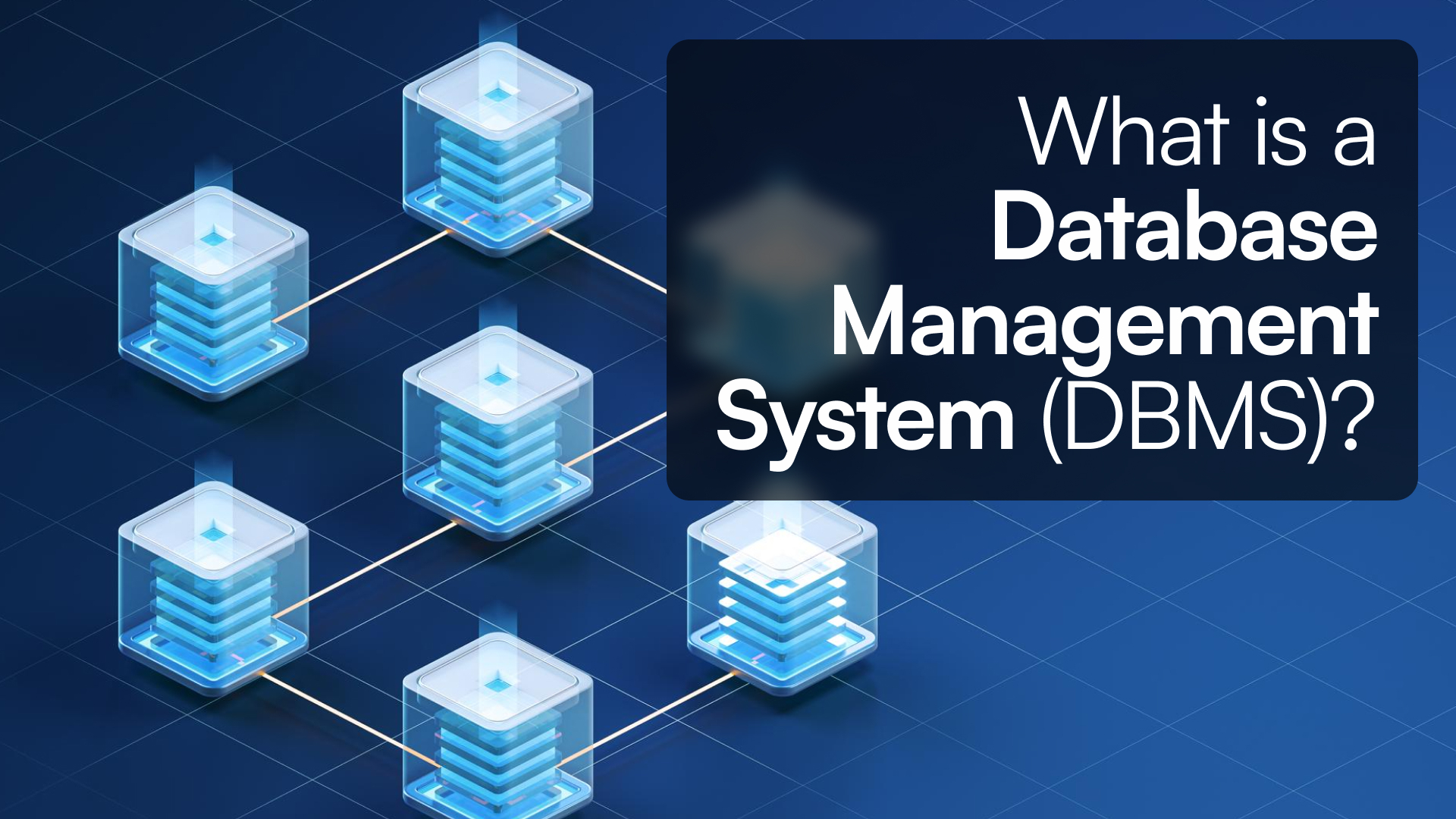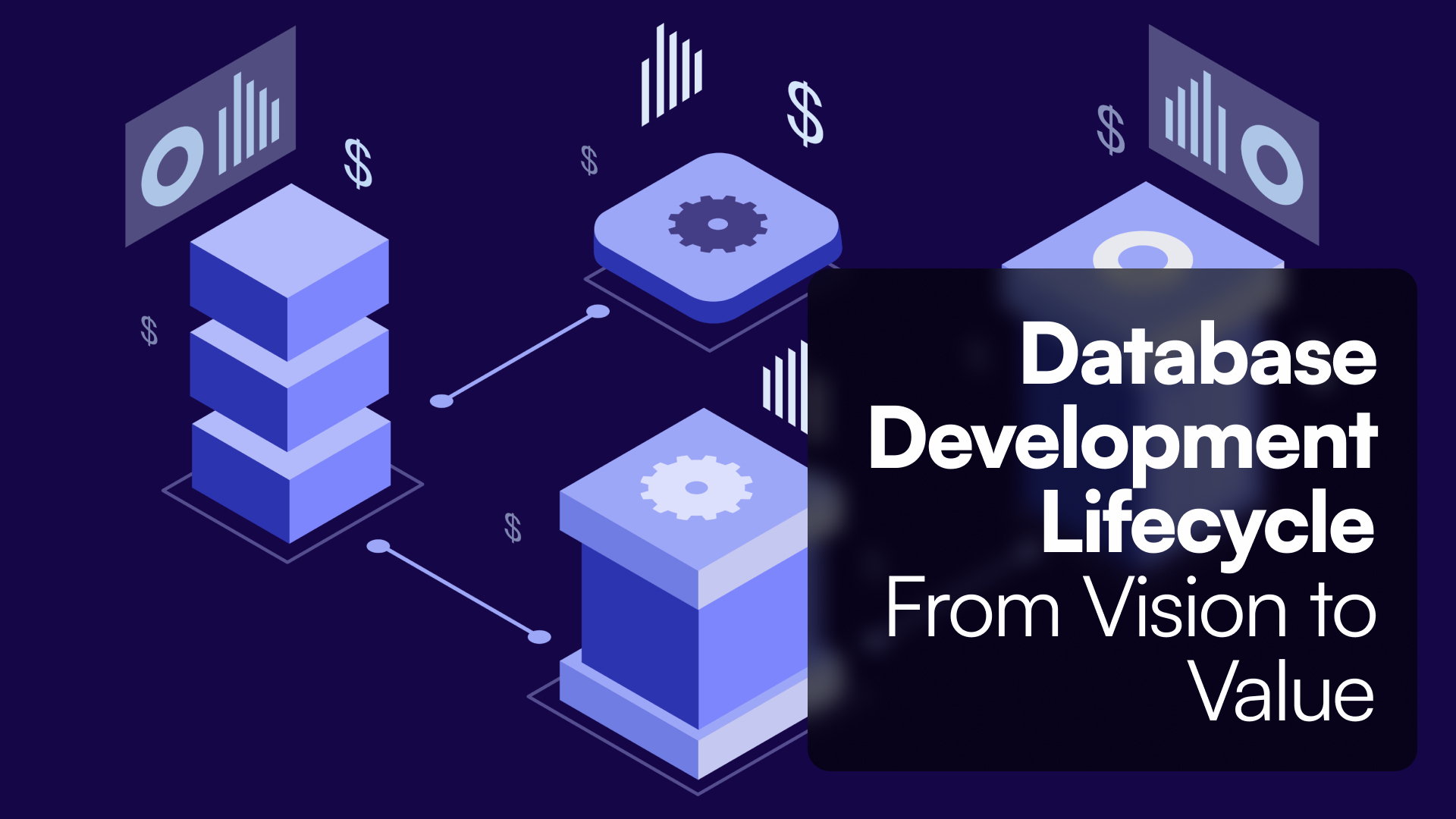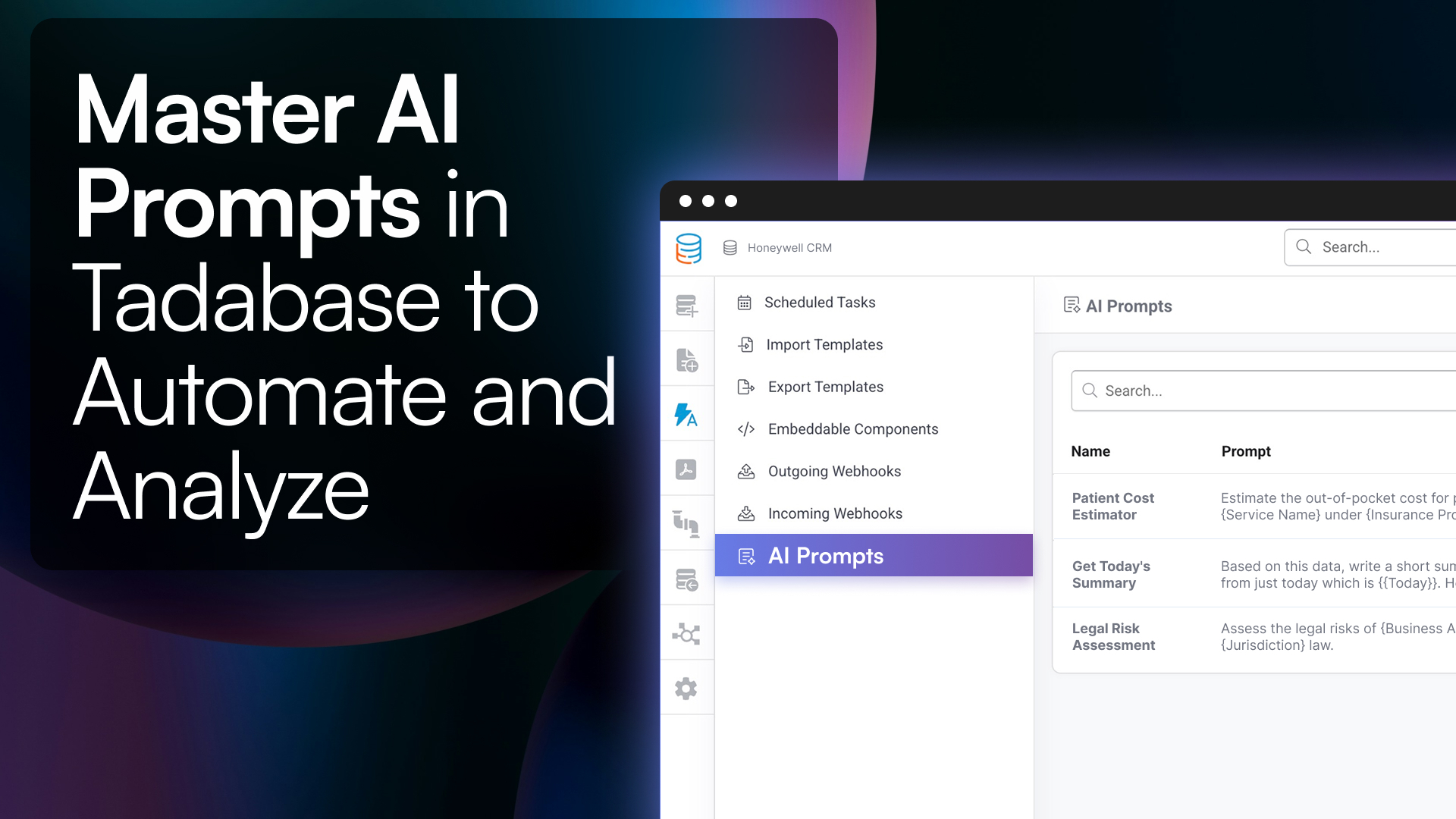Introduction
A DBMS, or Database Management System is the software that makes your data accessible, usable, and secure. If you're running a business, managing your customer data, product inventories, or even employee records, you’re likely relying on a DBMS to keep everything organized. But what exactly does a DBMS do, and why is it so essential?
Key Components of DBMS
Understanding a DBMS is easier when you break down its key components:
-
Database Engine: Think of this as the brain of your DBMS. It's what stores and retrieves your data whenever you need it. Whether you're pulling up sales figures from last year or updating customer records, the database engine is doing the heavy lifting in the background.
-
Query Processor: When you ask a question in a search engine, the query processor is what interprets your request and fetches the right answers from the database. It optimizes your queries so that you get your results quickly, even when dealing with massive datasets.
-
Schema: If your database were a filing cabinet, the schema would be the way you organize your folders. It’s the blueprint that dictates how your data is structured and how different data elements relate to one another.
-
Transaction Management: Imagine making a bank transfer—transaction management ensures that the money is deducted from one account and added to another smoothly and securely. If something goes wrong in between, it rolls back the changes to keep your data consistent.
-
Data Security: In an era where data breaches are common, data security within a DBMS is paramount. Access controls, encryption, and audit logs are just a few of the ways a DBMS protects your sensitive information.
Types of Database Management Systems
Depending on your needs, you might choose from different types of DBMS:
-
Hierarchical DBMS: Organizes data in a tree-like structure with parent-child relationships, ideal for hierarchical data like organizational charts.
-
Network DBMS: Allows multiple relationships between data nodes, making it suitable for complex structures like telecommunications networks.
-
Relational DBMS (RDBMS): Organizes data into tables and uses SQL to manage it. Common in business applications like banking and e-commerce.
-
Object-Oriented DBMS: Stores data as objects, mirroring object-oriented programming. Often used in applications needing complex data models, like CAD.
-
NoSQL DBMS: Designed for unstructured data and high scalability, NoSQL databases are used in big data and real-time web applications.
Comparison of DBMS Types
| DBMS Type | Structure | Best Use Case | Examples |
|---|---|---|---|
| Hierarchical DBMS | Tree-like | Organizational charts, file systems | IBM Information Management System (IMS) |
| Network DBMS | Graph structure | Telecoms, complex relationships | Integrated Data Store (IDS) |
| Relational DBMS | Table-based | Banking, e-commerce | MySQL, PostgreSQL |
| Object-Oriented DBMS | Object-based | CAD, complex data | db4o |
| NoSQL DBMS | Flexible (document, key-value, etc.) | Big data, real-time apps | MongoDB, Cassandra |
Advantages of Using a DBMS
Implementing a DBMS brings several key benefits:
-
Enhanced Security: With data breaches on the rise, DBMS security features like encryption and access controls are essential.
-
Reduced Redundancy: DBMS reduces duplicate data, saving storage and ensuring consistency.
-
Better Data Integrity: Rules and constraints enforce data accuracy.
-
Scalability: Modern DBMS solutions handle growing data needs, allowing more users and data without performance issues.
-
Improved Data Accessibility: Multiple users can access the same data, enabling collaboration and real-time decision-making.
Challenges in Database Management
However, managing a DBMS isn’t without its challenges:
-
Scalability Issues: As data grows, ensuring the DBMS can scale effectively is challenging.
-
Complexity: Setting up and maintaining a DBMS requires expertise, making it costly and time-consuming.
-
Migration Difficulties: Moving from one DBMS to another is complex, especially with large datasets.
-
Cost: High-end DBMS solutions can be expensive to implement and maintain, which can be challenging for small businesses.
Industry-Specific Use Cases of DBMS
Database Management Systems (DBMS) are essential tools across various industries, helping organizations to manage, secure, and optimize data workflows. Here are several specific applications where DBMS technology plays a crucial role:
1. Healthcare
- Patient Records Management: Securely stores and organizes electronic health records (EHR), ensuring easy access for healthcare providers while maintaining patient privacy.
- Data Privacy and Compliance: Meets compliance requirements like HIPAA by enforcing access controls and audit trails.
- Medical Research: Enables researchers to analyze large datasets (like patient histories and treatment outcomes), facilitating discoveries and improvements in medical care.
- Appointment Scheduling and Billing: Manages patient schedules and billing records, reducing errors and improving operational efficiency.
2. Finance
- Transaction Processing: Handles high volumes of real-time transactions, ensuring consistency and security across millions of daily financial interactions.
- Risk Management and Fraud Detection: Analyzes transaction data in real-time to identify suspicious activities and manage financial risks.
- Customer Data Management: Maintains secure records of customer information, investment portfolios, and account details.
- Regulatory Compliance: Ensures that financial records meet industry regulations and standards, such as SOX or AML (Anti-Money Laundering) laws.
3. Retail and E-Commerce
- Inventory and Supply Chain Management: Tracks stock levels, supplier information, and shipping details to optimize inventory and reduce stockouts.
- Customer Data and Personalization: Stores customer purchase history and preferences, allowing for targeted marketing and personalized shopping experiences.
- Sales Analytics: Analyzes sales data to identify trends, optimize pricing strategies, and forecast demand.
- Order Fulfillment: Manages order processing from placement to delivery, ensuring accurate tracking and timely shipments.
4. Manufacturing
- Production Planning and Scheduling: Uses data on material availability, labor, and equipment to optimize production schedules and reduce downtime.
- Quality Control: Tracks product data at each stage of the manufacturing process to ensure quality standards are met.
- Supply Chain and Inventory Management: Monitors inventory levels, suppliers, and logistics to optimize supply chain efficiency and reduce costs.
- Maintenance Management: Keeps records of machinery maintenance schedules, helping prevent equipment failures and minimizing downtime.
5. Telecommunications
- Network Management: Manages vast amounts of network performance data, enabling proactive monitoring and maintenance.
- Customer Relationship Management (CRM): Stores customer details, billing records, and support tickets to enhance customer service and improve user satisfaction.
- Billing Systems: Processes billing data in real-time, ensuring accurate customer invoices and payments.
- Data Analytics for Service Improvement: Analyzes usage patterns and customer feedback to optimize service offerings and network performance.
6. Education
- Student Records Management: Organizes student enrollment, grades, and attendance records for schools and universities.
- Course Management: Manages course schedules, resources, and faculty assignments, enabling efficient resource planning.
- Learning Analytics: Analyzes student performance and engagement data to improve curriculum and personalize learning experiences.
- Library Management: Catalogs and manages digital and physical library assets, allowing for efficient resource tracking and borrowing.
7. Government and Public Sector
- Citizen Data Management: Maintains secure databases of citizen records, such as IDs, tax records, and social services data.
- Public Safety and Emergency Response: Stores and manages emergency response data, helping public safety agencies coordinate resources effectively.
- Regulatory Compliance and Reporting: Ensures data compliance with regulatory requirements, such as GDPR or FOIA (Freedom of Information Act).
- Infrastructure and Urban Planning: Utilizes geographic and demographic data to plan urban development and manage infrastructure projects.
8. Energy and Utilities
- Resource Management: Tracks the production and distribution of resources like electricity, gas, and water.
- Grid Management and Maintenance: Monitors energy grids and utility equipment to optimize performance and reduce downtime.
- Customer Billing and Payment Processing: Manages customer billing information and processes payments securely.
- Environmental Data Tracking: Analyzes environmental data to comply with regulations and optimize sustainable resource management.
9. Transportation and Logistics
- Fleet and Route Optimization: Manages fleet operations, optimizing routes and schedules to reduce costs and delivery times.
- Inventory and Warehouse Management: Tracks inventory levels in warehouses and automates restocking processes.
- Customer Tracking and Order Fulfillment: Provides real-time updates on order status, improving transparency for customers.
- Maintenance Tracking: Records maintenance schedules for vehicles and equipment, helping reduce unexpected breakdowns.
10. Hospitality and Travel
- Booking and Reservation Systems: Manages customer reservations, availability, and pricing for hotels, airlines, and other services.
- Customer Relationship Management (CRM): Stores guest preferences and feedback, enabling personalized experiences.
- Inventory Management: Tracks inventory for in-house services like dining and room amenities, ensuring resources are available for guests.
- Loyalty Programs and Rewards: Manages loyalty program data, tracking customer rewards and engagement to improve retention.
Future Trends in Database Management
Looking forward, several trends are shaping the future of DBMS:
-
Cloud-Based DBMS: With more businesses moving data to the cloud, cloud-based DBMS solutions offer flexibility and scalability at a lower cost.
-
AI and Automation: AI automates tasks like query optimization and predictive analytics, making DBMS management more efficient.
-
NoSQL and Multi-Model Databases: As data becomes more diverse, NoSQL and multi-model databases handle unstructured data.
-
Edge Computing: With IoT, managing data close to where it's generated (edge computing) is increasingly essential for real-time processing.
These industry-specific applications illustrate how DBMS systems help various sectors manage data efficiently, ensure data security, and improve decision-making. From real-time transaction processing in finance to patient record management in healthcare, a DBMS can adapt to the unique requirements of each industry, driving operational efficiency and providing valuable insights.
Key Definitions in Database Management
-
Database Management System (DBMS): Software that enables users to store, retrieve, and manage data in a structured way. Examples include MySQL, Oracle, and MongoDB.
-
Relational Database Management System (RDBMS): A type of DBMS that stores data in tables with rows and columns, using SQL for data management. Examples include PostgreSQL and Microsoft SQL Server.
-
NoSQL Database: A non-relational database designed for unstructured or semi-structured data. NoSQL databases are scalable and flexible, making them ideal for big data applications. Examples include MongoDB and Cassandra.
-
Structured Query Language (SQL): A programming language used to manage and manipulate relational databases. SQL is the standard language for RDBMS.
-
Data Integrity: The accuracy, consistency, and reliability of data stored in a database. Ensuring data integrity is a key function of a DBMS.
-
Schema: The structure that defines how data is organized within a database, including tables, fields, and relationships between them.
-
Transaction Management: A DBMS feature that ensures all operations within a transaction are completed successfully. If any part of the transaction fails, the system reverts back to its previous state to maintain data integrity.
-
Data Redundancy: The unnecessary duplication of data within a database, which a well-implemented DBMS can minimize.
-
Data Migration: The process of transferring data from one system or database to another. This can be complex and requires careful planning to avoid data loss or corruption.
-
Cloud-Based DBMS: A database management system that runs on a cloud computing platform, offering scalability, flexibility, and cost savings compared to traditional on-premise databases.
Learn more about essential database terms and concepts for beginners here.
Conclusion
A Database Management System (DBMS) is essential for any organization that deals with large amounts of data. Whether you're looking to streamline operations, enhance data security, or scale your business, understanding the role of a DBMS can help you make informed decisions. By staying informed about the latest trends and best practices, and leveraging platforms like Tadabase, you can ensure your data management strategies remain robust, scalable, and effective.
For more detailed insights, you can explore resources like IBM’s database documentation, TechTarget’s overview of DBMS, and Simplilearn’s guide to database management.
Frequently Asked Questions
1. What are the different types of Database Management Systems (DBMS)?
- Answer: The main types of DBMS include:
- Hierarchical DBMS: Organizes data in a tree-like structure with parent-child relationships, suitable for applications with hierarchical data.
- Network DBMS: Allows for more complex relationships with multiple parent-child structures, commonly used in telecommunications.
- Relational DBMS (RDBMS): Organizes data into tables and uses SQL, ideal for structured data applications like finance and e-commerce.
- Object-Oriented DBMS: Stores data as objects, fitting for applications requiring complex data modeling (e.g., CAD software).
- NoSQL DBMS: Handles unstructured data with high scalability, widely used in big data, social media, and real-time applications.
2. What roles are involved in database management?
- Answer: Key roles in database management include:
- Database Administrator (DBA): Manages database security, performance, and maintenance.
- Data Engineer: Focuses on data flow and ETL (Extract, Transform, Load) processes.
- Database Developer: Builds and optimizes databases to meet specific application needs. These roles work together to ensure efficient, secure, and accessible data management.
3. Is SQL a DBMS?
- Answer: No, SQL (Structured Query Language) is not a DBMS; it is a programming language used to query and manage data within relational databases. SQL is essential for interacting with RDBMS platforms like MySQL, PostgreSQL, and Microsoft SQL Server.
4. What are some examples of popular DBMS platforms?
- Answer: Commonly used DBMS platforms include:
- Relational DBMS: MySQL, Oracle Database, Microsoft SQL Server
- NoSQL DBMS: MongoDB, Cassandra, Couchbase
- Cloud-Based DBMS: AWS RDS, Azure SQL Database, Google Cloud Spanner Each platform has unique strengths, catering to different data types and scalability needs.
Explore the best database software options.
5. What are the primary benefits of using a DBMS?
- Answer: A DBMS provides numerous advantages, including:
- Enhanced Data Security: Protects sensitive data with encryption and access controls.
- Reduced Redundancy: Centralizes data to eliminate duplication and inconsistencies.
- Data Integrity: Maintains accurate, reliable data through validation rules and constraints.
- Scalability: Adapts to growing data volumes and user demand.
- Accessibility: Enables multiple users to access data simultaneously, supporting collaboration.
6. How do cloud-based DBMS solutions work, and what are their advantages?
- Answer: Cloud-based DBMS solutions are hosted on cloud platforms (e.g., AWS, Azure) and accessed via the internet. Benefits include:
- Flexibility: Quick scalability without hardware limitations.
- Cost Efficiency: Reduced costs from maintenance-free, pay-as-you-go models.
- Remote Access: Access data securely from any location, facilitating collaboration.
- Automated Backups and Recovery: Cloud providers offer built-in data protection features.
7. How do SQL and NoSQL databases differ?
- Answer: SQL databases are table-based and use structured data, making them suitable for applications with clear data relationships. NoSQL databases, on the other hand, handle unstructured or semi-structured data, allowing for high scalability and flexibility. NoSQL is commonly used for big data, social media, and real-time analytics.
8. What common challenges arise in managing a DBMS?
- Answer: Key challenges in DBMS management include:
- Scalability: Ensuring the DBMS can grow with data and user demand.
- Data Security: Protecting sensitive data from unauthorized access and breaches.
- Performance Optimization: Maintaining performance as data volumes increase.
- Migration Complexity: Moving data between systems, especially for large datasets.
- Compliance: Meeting data regulations like GDPR or HIPAA.
9. What is the role of a DBMS in data security?
- Answer: A DBMS enhances data security by implementing:
- Access Controls: Restricts data access based on user roles.
- Encryption: Secures sensitive data in transit and at rest.
- Audit Logs: Tracks access and modifications for accountability.
- Backups: Regular backups support data recovery in case of data loss or breaches.
10. What are transactions in a DBMS, and why are they important?
- Answer: Transactions in a DBMS are sequences of operations performed as a single unit of work, such as transferring funds between bank accounts. They ensure data integrity by guaranteeing that all operations are completed successfully (or none at all), maintaining a consistent and accurate database.
11. What is data redundancy, and how does a DBMS reduce it?
- Answer: Data redundancy is the duplication of data across a database, which can lead to inconsistencies. A DBMS centralizes data storage, ensuring that applications access the same data source, which reduces redundancy and improves data accuracy.
12. How does a DBMS handle scalability?
- Answer: Modern DBMS platforms, especially cloud-based solutions, are designed to scale up or down as needed. They support data distribution across multiple servers and can accommodate increasing data volumes and user load without performance loss, making them ideal for growing businesses.
13. What is database normalization, and why is it used?
- Answer: Database normalization is a process of structuring data to reduce redundancy and dependency. It involves organizing tables and fields to minimize data duplication, which enhances data integrity and simplifies maintenance.
14. Can a DBMS integrate with other business tools?
- Answer: Yes, a DBMS often includes integration options with CRMs, ERPs, and analytics tools. Many DBMS platforms, like Tadabase, offer API integrations, enabling seamless data flow between the DBMS and other business applications to improve data consistency and operational efficiency.
15. What is database migration, and why might it be necessary?
- Answer: Database migration is the process of transferring data from one DBMS to another, often necessary when upgrading systems, moving to a cloud-based DBMS, or adapting to new data requirements. Migration requires careful planning to ensure data compatibility and integrity during the transfer.
16. How does a DBMS support compliance with data regulations?
- Answer: A DBMS aids in compliance by implementing access controls, audit trails, and data validation rules to meet standards like GDPR, HIPAA, or CCPA. These features help businesses manage personal data securely and transparently, adhering to regulatory requirements.
17. What are the key trends in database management systems?
- Answer: Current trends in DBMS include:
- Cloud Adoption: More businesses are adopting cloud-based DBMS for flexibility and cost savings.
- AI and Machine Learning: DBMS platforms are incorporating AI to automate tasks like query optimization and predictive analytics.
- Multi-Model Databases: Supporting multiple data types (e.g., relational, document) in a single system.
- Edge Computing: DBMS at the edge (closer to data sources) is rising due to IoT, enhancing real-time data processing capabilities.
18. Can Tadabase replace my traditional DBMS?
- Answer: Yes, Tadabase offers a flexible, no-code platform that enables businesses to manage and build applications around their data without the complexity of traditional DBMS. Tadabase’s scalable solution allows you to design custom data structures, automate workflows, and integrate with other tools, making it an ideal choice for businesses seeking adaptability and ease of use.
19. What is a Database Management System (DBMS)?
- Answer: A Database Management System (DBMS) is software that enables the creation, management, and organization of databases. It allows users to store, retrieve, update, and delete data while maintaining data security, integrity, and accessibility. Common types include relational, hierarchical, network, object-oriented, and NoSQL databases.








